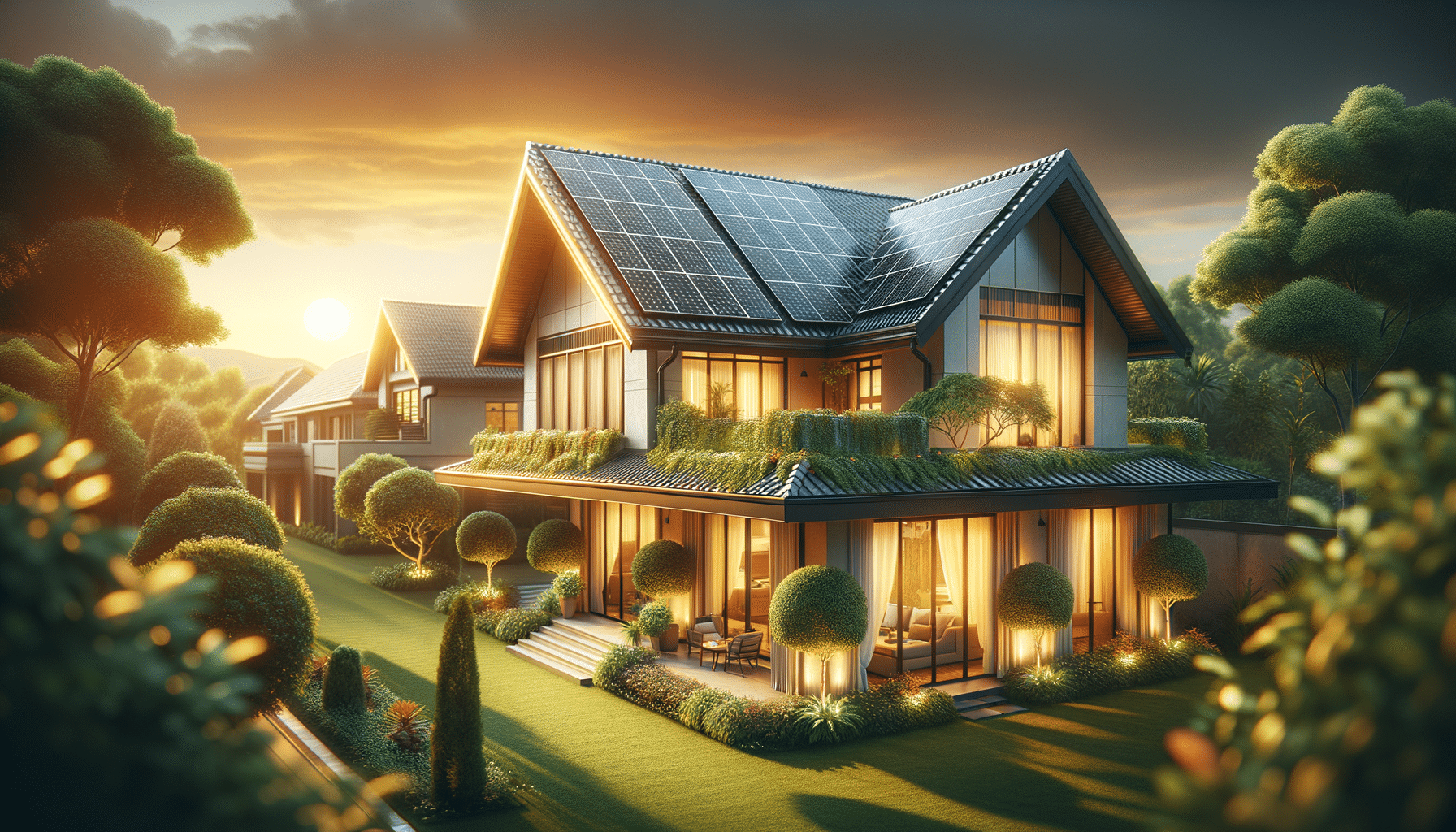
Enhancing Home Energy Efficiency and Style with Solar Roof Tiles
The Rising Popularity of Solar Roof Tiles
In recent years, solar roof tiles have emerged as a highly rated solution for homeowners looking to enhance both the energy efficiency and aesthetic appeal of their homes. Unlike traditional solar panels, which are mounted on top of existing roofs, solar roof tiles integrate seamlessly into the roof structure, offering a sleek and modern appearance. This integration has made them a well-regarded choice for those who prioritize design and sustainability.
The demand for solar roof tiles is driven by several factors. Firstly, they represent an exceptional quality innovation in renewable energy technology, providing a dual function of power generation and weather protection. Secondly, as environmental awareness grows, more homeowners are drawn to sustainable solutions that reduce their carbon footprint. Solar roof tiles offer a tangible way to contribute to environmental protection while enjoying the benefits of reduced energy costs.
Furthermore, government incentives and rebates for solar installations have made solar roof tiles more accessible to a broader audience. These financial incentives, coupled with the long-term savings on energy bills, make solar roof tiles a financially attractive option. Homeowners can expect a return on investment through energy savings, which further underscores their popularity.
Understanding the Technology Behind Solar Roof Tiles
Solar roof tiles, also known as solar shingles, are designed to function like traditional roofing materials while harnessing solar energy. They are crafted from advanced photovoltaic materials that convert sunlight into electricity. This technology is similar to that of conventional solar panels but is innovatively integrated into the roofing materials themselves.
The tiles are typically made of durable materials such as tempered glass or polymer composites, which offer outstanding durability and weather resistance. This ensures that the tiles can withstand harsh weather conditions while maintaining their efficiency and appearance. The photovoltaic cells embedded within the tiles are capable of generating electricity even on cloudy days, making them a reliable source of renewable energy.
One of the key advantages of solar roof tiles is their ability to blend in with traditional roofing materials, such as asphalt or slate. This means homeowners do not have to compromise on the aesthetic appeal of their homes when opting for solar technology. The discreet appearance of these tiles makes them an attractive choice for those who wish to maintain the architectural integrity of their homes.
Financial and Environmental Benefits
Investing in solar roof tiles brings about a range of financial and environmental benefits. From a financial perspective, the initial cost of installation is offset by significant savings on electricity bills over time. Solar roof tiles generate electricity that can power household appliances, reducing reliance on the grid and lowering monthly energy costs.
In addition to direct savings, homes equipped with solar roof tiles often see an increase in property value. As more buyers seek energy-efficient homes, the presence of solar technology can make a property more attractive in the real estate market. This added value can be a compelling reason for homeowners to consider solar roof tiles as a long-term investment.
From an environmental standpoint, solar roof tiles contribute to the reduction of greenhouse gas emissions. By generating clean energy, they help decrease the reliance on fossil fuels, thereby reducing the home’s carbon footprint. This aligns with global efforts to combat climate change and promotes a more sustainable future.
Installation and Maintenance Considerations
When considering solar roof tiles, it’s essential to understand the installation and maintenance aspects. The installation process is typically more complex than that of traditional solar panels, as it involves integrating the tiles into the roof structure. This requires skilled professionals who are experienced in both roofing and solar technology.
It’s important to choose a reputable installer who can ensure that the tiles are properly aligned and connected to maximize energy efficiency. The quality of the installation can significantly impact the performance and longevity of the solar roof tiles, making it a crucial step in the process.
Maintenance of solar roof tiles is generally straightforward. They require minimal upkeep, mainly involving periodic cleaning to remove debris and ensure optimal sunlight exposure. Regular inspections can help identify any issues early on, ensuring that the system continues to operate efficiently. With proper installation and maintenance, solar roof tiles can provide reliable energy for many years.
Future Trends and Innovations in Solar Roofing
The future of solar roof tiles is promising, with ongoing advancements in technology and materials. One of the emerging trends is the development of more efficient photovoltaic materials that can capture a broader spectrum of sunlight, thereby increasing energy output. This innovation could make solar roof tiles even more effective and appealing to homeowners.
Another exciting development is the integration of smart home technology with solar roofing systems. This allows homeowners to monitor and manage their energy usage in real-time, optimizing the efficiency of their solar roof tiles. Such integrations can lead to greater energy savings and a more personalized approach to managing home energy consumption.
As the demand for sustainable energy solutions continues to grow, manufacturers are likely to expand their range of styles and colors for solar roof tiles. This will provide homeowners with more options to match their aesthetic preferences, further enhancing the appeal of solar roofing solutions. The combination of technological advancements and increased consumer interest suggests a bright future for solar roof tiles.


